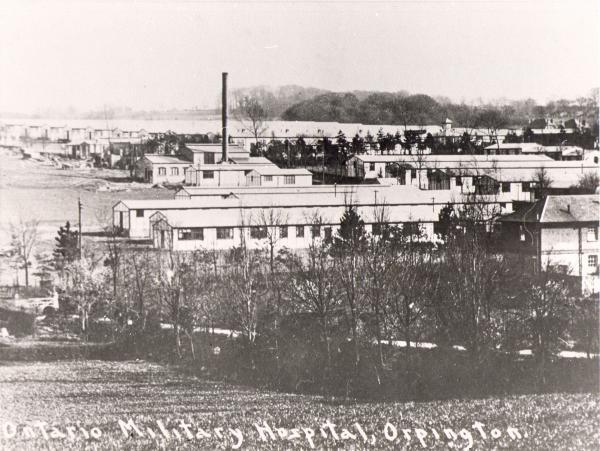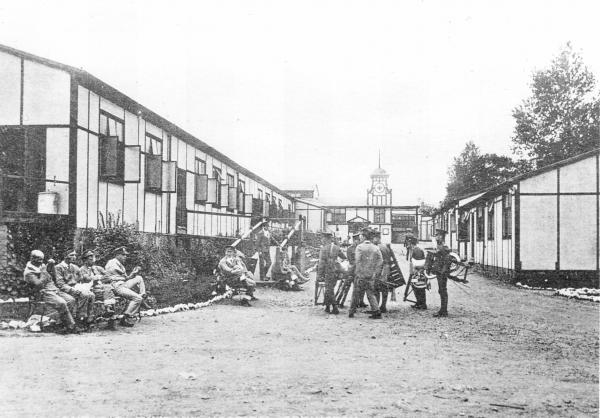- Home
- Local History
- A Look Back at Orpington Hospital
A Look Back at Orpington Hospital
Written by Pam Preedy.
The outbreak of the First World War in 1914 saw men from all over Britain and the Commonwealth rush to the fight; some ‘on reserve’ re-joined their old regiments and battalions, other joined queues to volunteer, anxious not to miss out as it would ‘be over by Christmas.’ They came from far and wide, including Australia, New Zealand and Canada. Many, having served their time in the regular army, had migrated to try their hand at farming – looking for new opportunities.
As we all know, the Great War (1914-1918) saw unimagined carnage and devastation, not just to the lands over which it was fought, but to the men themselves who gave their lives in thousands. Many endured terrible wounds. The province of Ontario wanted to make their contribution to the war effort and built a hospital, the 16th Canadian General (known locally as the Ontario hospital), at Orpington at their own cost and fully maintained by the province. It was one of the largest and most up-to-date military hospitals in the world. It was open to troops from Britain, Canada, Australia, Newfoundland and New Zealand – all were welcomed and treated.

When it opened in February, 1915, just four months after the start of building, it comprised 20 wards, each containing 52 beds, providing care for 1,040 patients. It was not enough to meet the level of need during the war years and in 1917 an extension commenced, to double capacity and increase the number of beds to 2,120. an isolation ward with 40 beads was also added.
Some of the statistics are truly amazing; in a six-month period, 448,955 meals were served as a cost of £42,561 (today worth in the region of £2,254,450). The laundry bill was £3,405 (today £180,365) and they used 17,201,000 gallons or 78,197,294 litres of water.
Up to the end of January 1919, the number of admissions were:
British – 12,156;
Canadian – 12, 483;
Australian – 1,626;
Newfoundland – 2;
New Zealand – 26, 278.
A total of 26, 278
For the same period there were only 182 deaths.
The hospital was blessed with a department for plastic surgery to help men with facial and other surgical cases. For men with terrible facial deformities, the only alternative solution was a metal mask to hide the injuries – a living death. There was a state-of-the-art operating theatre as well as a Pathological Laboratory, a Bacteriological Laboratory, a Clinical Laboratory, a Dental Department and an X-ray department.

Women played an important part in the care of patients, not just as nurses, What would now be called occupational therapy, was provided by Lady Patricia Ramsay teaching patients to knit, sew and make fancy goods. There was a well0organised rote of visitors who brought bright smiles, cheery gossip, gifts of fruit and flowers, along with tender solicitude and gentle sympathy to bring hope and solace to men so far from home and families.
On the 19th December 1919, the Bromley & District Times reported that the hospital had been sold to the Ministry of Pensions for £80,000 (£4,237,600 today). Its intended use was ‘ for the care and treatment of convalescent and disabled soldiers handed over to the ministry by the War Office’. It ultimately became known as Orpington Hospital, and by 1979 most of the hutted wards, originally built from asbestos, had been demolished. The Canada Wing was opened in 1983 and, by this time, the building contained the Out-Patients Department, an operating theatre and five wards. In 1990, the hospital had 400 beds and plans doe further development ceased.
Originally published in Life in Orpington magazine (Issue 34, December 2021)
For further reading see:
Orpington From Saxon Times to the Great War (held at Bromley Historic Collections, Bromley Central Library)
